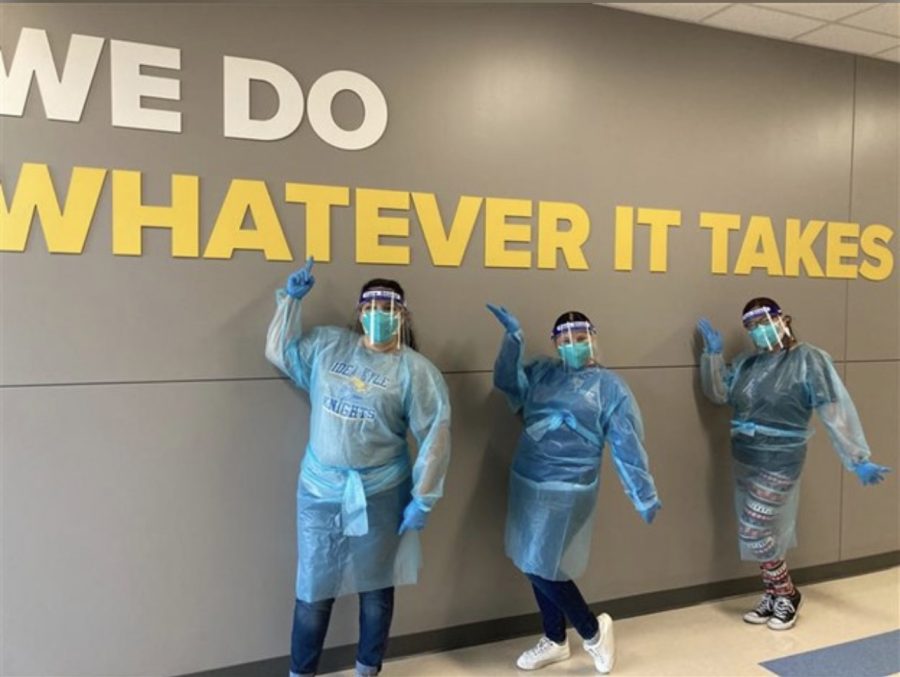Omicron: Are we doing the right thing?
Health departments claim ‘we do whatever it takes,’ but is it in a safe way?
January 27, 2022
First identified in South Africa and Botswana last November, the Omicron variant has surged around the nation over the past several weeks, at a quicker rate than any previous form of the Coronavirus. While there’s a lot that scientists have yet to understand about Omicron, the variant is already causing a rise in new cases that may push some school districts and hospital systems to the breaking point.
Researchers first recognized Omicron due to its distinctive combination of more than fifty mutations. Some of the mutations were carried by earlier variants such as Alpha and Beta, and previous experiments had demonstrated that they could enable a Coronavirus to spread quickly. Other mutations were known to help Coronaviruses evade antibodies produced by vaccines. Unfortunately, an unexpectedly large fraction of Omicron cases involved people previously affected by different variants. For a deeper understanding of this increased risk of reinfection, a team of researchers studied the antibodies produced by those who recovered from Coronavirus to determine if mixing those antibodies in a dish with other variants would do a reliable job preventing the viruses from infecting human cells. However, an unanticipated discovery was that the Omicron still managed to make its way inside the cell most of the time. Concluding, the mutations carried by Omicron are changing the shape of its surface proteins, where antibodies lock onto the virus.
Several studies conducted by the Center for Disease Control and Prevention (CDC) indicated that complete vaccination plus an additional booster shot provides more vital protection against the new, progressive virus. “Without a booster, two doses of a vaccine-like Pfizer-BioNTech’s or Moderna’s provide much less protection,” mentions the CDC. In the developmental study, researchers drew blood from fully vaccinated people. They mixed their antibodies with Omicron in a petri-dish loaded with human cells, determining that every vaccine currently tested has done a worse job neutralizing Omicron than other variants. While trying antibodies from people who had received boosters of Moderna or Pfizer-BioNTech vaccines, the boosted antibodies blocked many Omicron viruses from infecting cells.
As the Omicron variant has rapidly spread across the nation and caused a significant spike in cases, school districts struggled to figure out a safe way when returning to school after the holiday break. Regarding the Gresham-Barlow School District, despite the increasing number of students and staff in quarantine, the school district has decided to remain open to keep the student’s education and best interests in mind. Through monitoring safety protocols, the only issue is frequent staff getting sick, causing a shortage of teachers and substitutes; the only potential outlier to temporarily transitioning to distance learning. However, the educational staff isn’t the only current shortage.
Hospitals and long-term care facilities are so short-staffed that many are compelling covid-positive employees to return to work, essentially arguing that bringing back asymptomatic or symptomatic staff is the only way they can keep their doors open amid a spike in hospitalizations. Updated guidelines from the CDC revealed, “health care workers with COVID who don’t have symptoms can return to work after seven days with a negative test, or in fewer days and without a test if there are staffing shortages.” Hospitals are a place to get the care and undergo the proper treatment to feel better from anything, so the new guidelines have caused uneasy feelings among staff and patients for their safety.
It’s been nearly two years since the original Coronavirus was discovered, and throughout several arising variants, the Omicron has easily been the most daunting. Although there are many unanswered questions among the nation and questionable decisions from healthcare departments, our society continues to put faith in the public.





